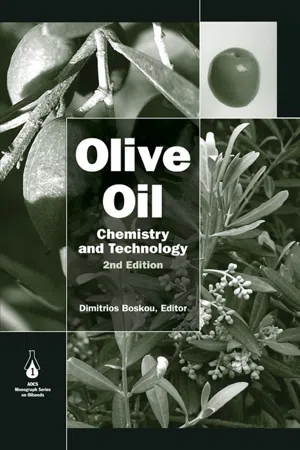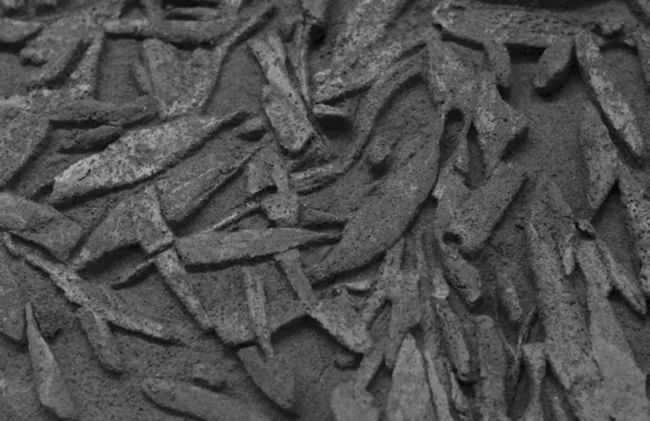
- 282 pages
- English
- ePUB (mobile friendly)
- Available on iOS & Android
About this book
A staple food for thousands of years for the inhabitants of the Mediterranean region, olive oil is now becoming popular among consumers all over the world. Olive oil differs from other vegetable oils because it is used in its natural form and has unique flavor and other characteristics. More and more research suggests its healthful benefits including reduced risk of coronary heart disease. Olive Oil is a compact and readable text on the most important aspects of chemistry, technology, quality, analysis and biological importance of olive oil. The topics selected have been developing rapidly in recent years, and will provide the reader with a background to address more specific problems that may arise in the future. Readers can expect more contributors and chapters in the 2nd edition, as well as a glossary.- Includes the chemistry and properties of olive oils- Contains details on the healthful properties of olive oil minor components- Extensive informaton on the analysis and authentication of olive oils- Features an overview on the economics of olive oil in the world market
Frequently asked questions
- Essential is ideal for learners and professionals who enjoy exploring a wide range of subjects. Access the Essential Library with 800,000+ trusted titles and best-sellers across business, personal growth, and the humanities. Includes unlimited reading time and Standard Read Aloud voice.
- Complete: Perfect for advanced learners and researchers needing full, unrestricted access. Unlock 1.4M+ books across hundreds of subjects, including academic and specialized titles. The Complete Plan also includes advanced features like Premium Read Aloud and Research Assistant.
Please note we cannot support devices running on iOS 13 and Android 7 or earlier. Learn more about using the app.
Information
The Culture of the Olive Tree (Mediterranean World)
Myths and the History of the Olive Tree

Table of contents
- Cover image
- Title page
- Table of Contents
- Copyright
- Preface
- Contributors
- PART 1: OVERVIEW AND ECONOMICS
- PART 2: CHEMISTRY, PROPERTIES, HEALTH EFFECTS
- PART 3: PROCESSING AND APPLICATION
- Glossary
- Index